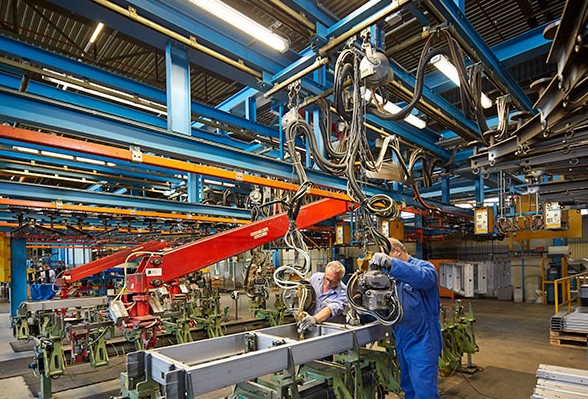Barcelona, Spain – Waste not, want not. Or more precisely, waste less, earn more. It’s a formula that markets are increasingly adopting as global leaders learn to cope with the growth in population – and consumption.
By 2025 cities will be producing 2.2 billion tonnes of solid waste annually, doubling 2012 levels. By 2030, 3 billion new customers will have entered the market. By 2050, 2.5 billion additional people will live in cities. With 30 percent of food going to waste and cars parked 95 percent of the time, consumption puts incredibly high pressure on the planet and its finite resources.
Is the world ready to shift towards a new, innovative and sustainable way of doing business?
Using less resources and recycling is only a partial solution. “If we have finite resources we need to be careful with how we use them. But just being careful is not the solution,” says Ellen MacArthur, founder of the Ellen MacArthur Foundation. “It buys us time, but it buys us time for what?”
MacArthur is a leading advocate of a “circular economy” based on minimizing waste and reusing resources. The European Union, for example, has adopted an action plan to help transition its economy to a circular one, promising to “boost global competitiveness, foster sustainable economic growth and generate new jobs.
The linear economy’s “take-make-use-dispose” needs to give way to a resilient and sustainable economy for the long-term. That economy aims to limit the extraction of raw materials and eliminate the production of waste; an economy that is restorative and regenerative by design, and which feeds back into the system. As MacArthur points out, an economy that “keeps the product to its highest value and utility at all times.”
A McKinsey study called the transition to a circular economy a $1 trillion business opportunity for the global economy.
The urgency and strategies needed to accelerate the transition from a linear economy to a circular economy was the focus of the first edition of the Circular Economy European Summit (CEES) in Barcelona, Spain in November.
Business Steps Up
Top executives of leading businesses have started to realize that “it is not about the product itself, but about how the product fits into the entire system,” as MacArthur states. Lighting giant Philips is a good example. It has designed a circular lighting model based on lighting design, lifetime reliability, technical lifetime extension, upgradeability, disassembly and recycling. It now provides light as a service to the Amsterdan Schiphol Airport.
“Systems thinking is applied broadly in the circular economy. In order to effectively transition to circular economy, links and consequences within and across the systems are taken into consideration at all times” says Lewis Perkins, President of the non-profit Cradle to Cradle Products Innovation Institute. H&M, the second largest fashion retailer in the world, acknowledged during the CEES that the fashion industry is the second most polluting industry in the world, after oil, and that there is a need for a systemic change in the way fashion is made and used. Although the company has already put in place recycling programs, will it be able to totally transition from a “take-make-use-dispose” model to a fully circular model?
Cities as Living Labs
Paris, Helsinki, Amsterdam and London are making circular strides . Helsinki aspires to make car ownership obsolete by creating a multimodal transport infrastructure and offering a mobility on-demand system by 2025. The city of Paris, together with other 20 institutions from Greater Paris, made the first steps to transition to a circular economy by developing a white paper with 65 initiatives in areas such as innovation and experimentation, and changes in legislation.
Investors and financial institutions are paying close attention to the nascent circular models. Banking institutions like ING Bank, Intesa Sanpaolo, or PGGM have already recognized that the global financial market needs to change to be able to finance these initiatives and make the transition to circular economy possible. “Circular economy is a great opportunity to rethink the concept of risk in the financial industry” said Massimiano Tellini, head of Circular Economy at the Italian bank Intesa Sanpaolo.
Transform Finance
The financial systems need to change from a credit perspective to be able to better adapt to the new business models. Circular models rely more on service provision and, as such, cashflows structures change and inflows get concentrated at specific periods of time; businesses’ capacity to bring in the customers with the right creditworthiness determines the companies’ credit risk levels; solvency and working capital needs might also change.
“Circular economy is a way to reinforce trust and redeem stakeholders in the economy at all levels, so that opportunities can be shared and created,” said Tellini.
Is the global economy prepared for that? Will it be possible to develop innovative business models that replace existing ones and contribute to a real sustainable growth? Will businesses, governments and investors help replicate and scale up circular models that have proven successful?
[seperator style=”style1″]Disclosure[/seperator]
Photo credit: Philips.











